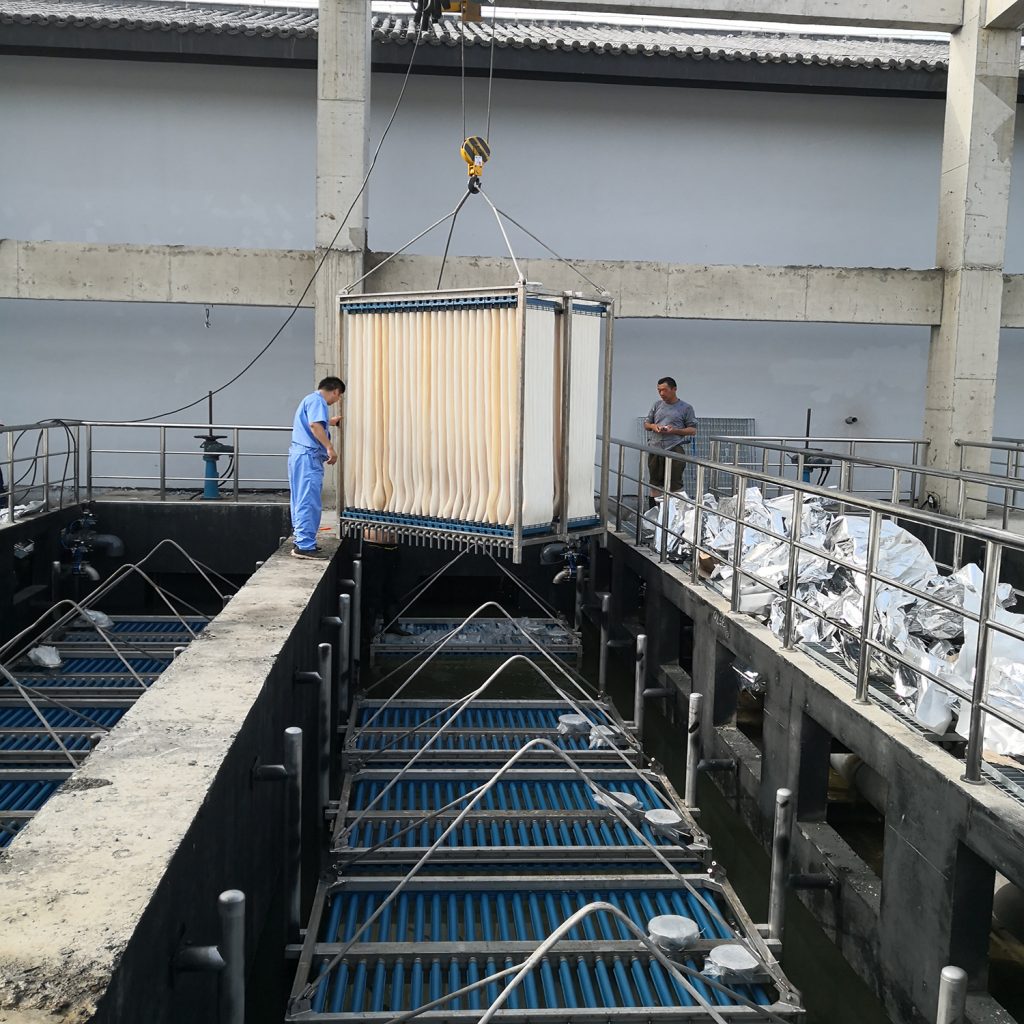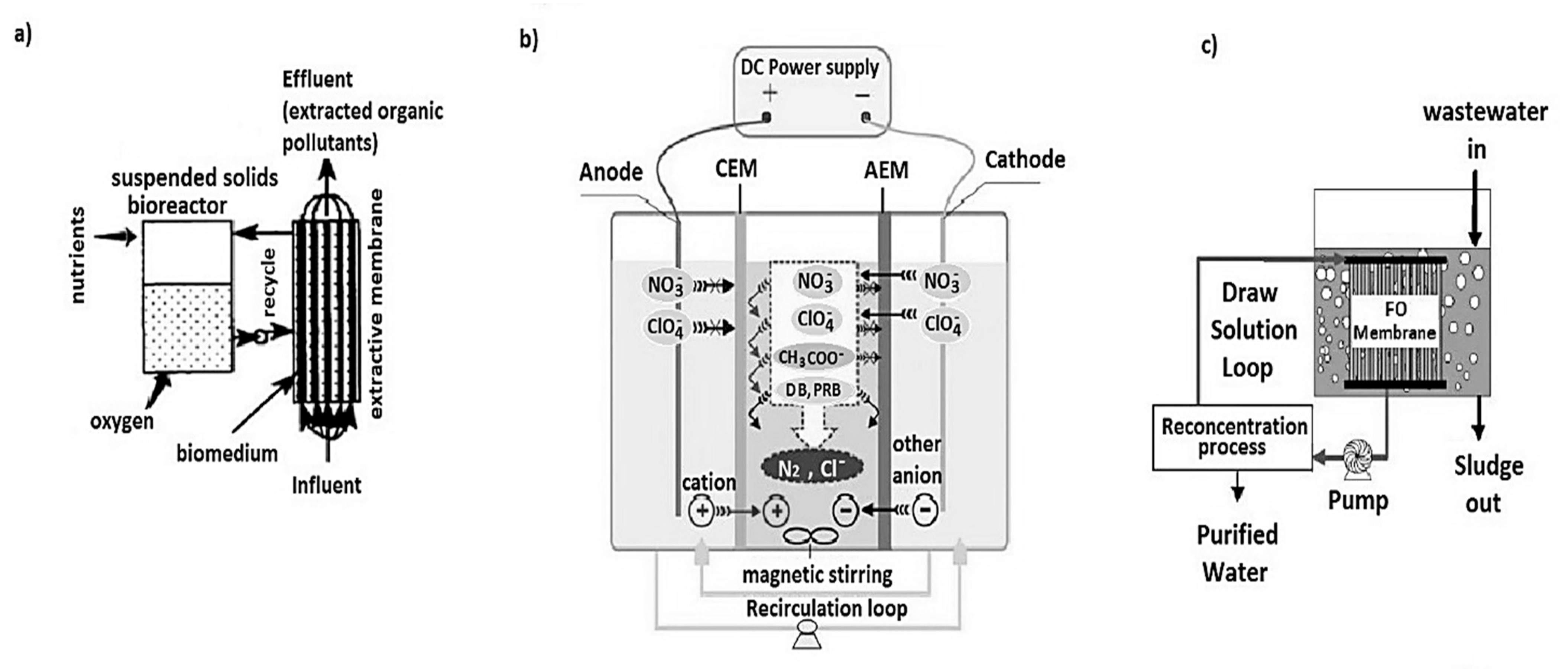Exploring the Environmental Impact of Membrane Bioreactor in Wastewater Treatment
Wiki Article
How Membrane Bioreactors Are Revolutionizing Water Purification Equipments
The development of membrane bioreactors (MBRs) stands for a considerable advancement in the field of water filtration, merging biological treatment processes with advanced membrane filtering technologies. As global water shortage intensifies, the role of MBRs in facilitating potable water reuse and lasting water monitoring becomes progressively essential.Overview of Membrane Layer Bioreactors
Membrane layer bioreactors (MBRs) stand for a substantial development in water filtration technology, as they incorporate organic treatment processes with membrane layer filtering. This integration enhances the performance of wastewater therapy by utilizing bacteria to degrade natural contaminants while simultaneously using semi-permeable membranes to separate treated water from suspended pathogens and solids.The MBR system usually includes an organic reactor where the microbial population metabolizes contaminants, complied with by a membrane layer filtration device that maintains biomass and permits only tidy water to go through. This twin functionality results in greater effluent high quality compared to conventional therapy methods. MBRs can be run in both set and constant flow settings, providing versatility in layout and application.
They also make it possible for the recuperation of water for reuse, hence adding to water sustainability initiatives. Generally, MBRs are at the leading edge of boosting water therapy efficiency and high quality, showcasing the capacity for ingenious services in ecological administration.
Advantages of MBR Technology
The integration of biological therapy with membrane purification supplies numerous advantages for water purification procedures. Among the key advantages of Membrane layer Bioreactor (MBR) modern technology is its capability to efficiently remove both not natural and natural pollutants, causing high-grade effluent. The membrane layers serve as a physical barrier, preventing suspended solids and virus from passing through, which improves the overall security and dependability of cured water.Additionally, MBR systems call for a smaller sized footprint contrasted to traditional therapy approaches, enabling for a lot more efficient room use. This portable style is particularly helpful in metropolitan setups where land is limited. MBRs likewise show functional adaptability, accommodating differing influent top qualities and flow rates without considerable performance destruction.
Moreover, the process provides enhanced nutrient removal abilities, specifically for nitrogen and phosphorus, which are crucial for protecting against eutrophication in getting waters. The minimized sludge production related to MBR modern technology additionally translates to lower disposal prices, making it an economical option in the lengthy run - Membrane Bioreactor. On the whole, the advantages of MBR technology setting it as a leading option for cutting-edge and sustainable water purification systems, resolving both ecological and financial issues
Applications in Water Purification
Applications of Membrane Layer Bioreactor (MBR) modern technology in water filtration are impactful and varied, dealing with various therapy requires across multiple fields. MBRs properly incorporate biological treatment procedures with membrane layer filtering, making them optimal for municipal wastewater therapy, commercial effluent management, and also potable water reuse campaigns.In municipal setups, MBRs are progressively utilized to improve the quality of treated wastewater, permitting compliance with rigorous discharge regulations and facilitating the recycling of water for watering and non-potable usages. Their small layout additionally makes them appropriate for urban atmospheres where space is limited.
Industrially, MBR technology is made use of to treat procedure water and wastewater, particularly in sectors such as food and drink, drugs, and textiles. By effectively getting rid of contaminants and suspended solids, MBRs assist sectors minimize environmental influences while recuperating important sources from wastewater streams.
Moreover, MBRs are gaining grip in decentralized water therapy applications, where small systems can be released in remote areas or creating regions. This flexibility enables communities to achieve sustainable water management solutions, enhancing access to clean water while reducing dependence on conventional treatment methods.
Study and Success Stories

In another example, a textile production center in Bangladesh took on MBR technology to resolve its wastewater challenges. The system decreased chemical oxygen need (COD) levels from 1,200 mg/L to less than 100 mg/L, therefore satisfying governing requirements and substantially minimizing ecological effect.
The College of Cape Town's MBR installment has actually proven reliable in dealing with greywater for non-potable reuse on school. This task not just conserves safe and clean water yet likewise functions as an instructional design for sustainable methods.
Furthermore, a seafood handling plant in Norway utilized MBR modern technology to treat effluents consisting of high degrees of organic matter, attaining over 90% contaminant elimination. These instance research studies emphasize MBR technology's convenience and its vital function in boosting water quality throughout pop over to these guys varied applications.
Future of Water Therapy Solutions
As global water shortage and air pollution obstacles heighten, innovative water therapy remedies are coming to be increasingly vital to make site web certain lasting accessibility to tidy water. The future of water treatment depends on the assimilation of innovative modern technologies that enhance the efficiency and effectiveness of purification procedures. Membrane layer bioreactors (MBRs) go to the center of this advancement, incorporating organic therapy with membrane layer filtration to produce premium effluent appropriate for different applications.
Arising trends such as source recuperation from wastewater, consisting of nutrients and energy, will certainly even more transform therapy facilities into environmentally friendly hubs. Improvements in nanotechnology and membrane materials assure enhanced performance and long life of filtering systems.

Final Thought
Their duty in potable water reuse and sustainable water administration highlights their relevance in dealing my response with international water shortage obstacles. Proceeded research and advancement will certainly better enhance the efficacy and adoption of MBR innovation, making certain a resilient future for water treatment services.The introduction of membrane layer bioreactors (MBRs) stands for a significant advancement in the field of water filtration, combining organic therapy procedures with advanced membrane purification innovations. As worldwide water shortage heightens, the function of MBRs in assisting in safe and clean water reuse and lasting water monitoring comes to be significantly vital. They additionally make it possible for the recuperation of water for reuse, therefore adding to water sustainability efforts.As worldwide water shortage and contamination challenges heighten, ingenious water treatment services are becoming increasingly important to ensure sustainable accessibility to tidy water. Their function in potable water reuse and sustainable water monitoring highlights their relevance in resolving worldwide water shortage challenges.
Report this wiki page